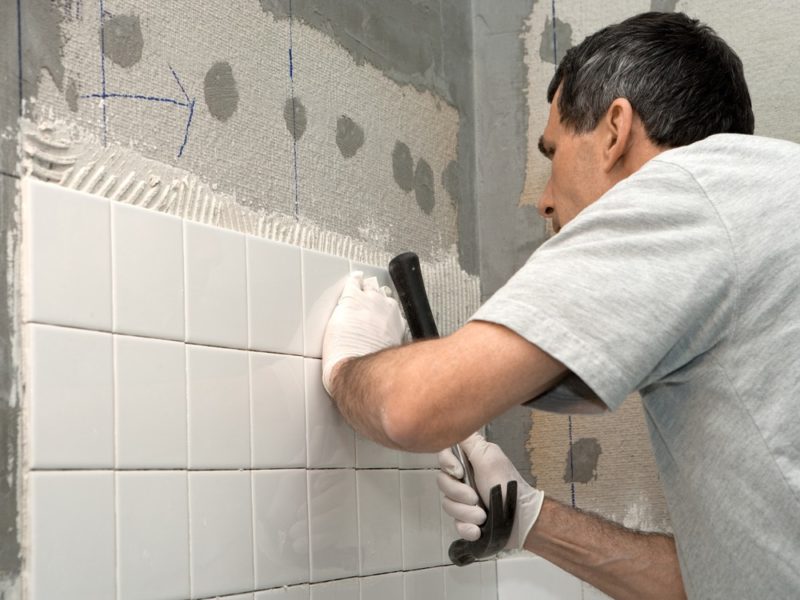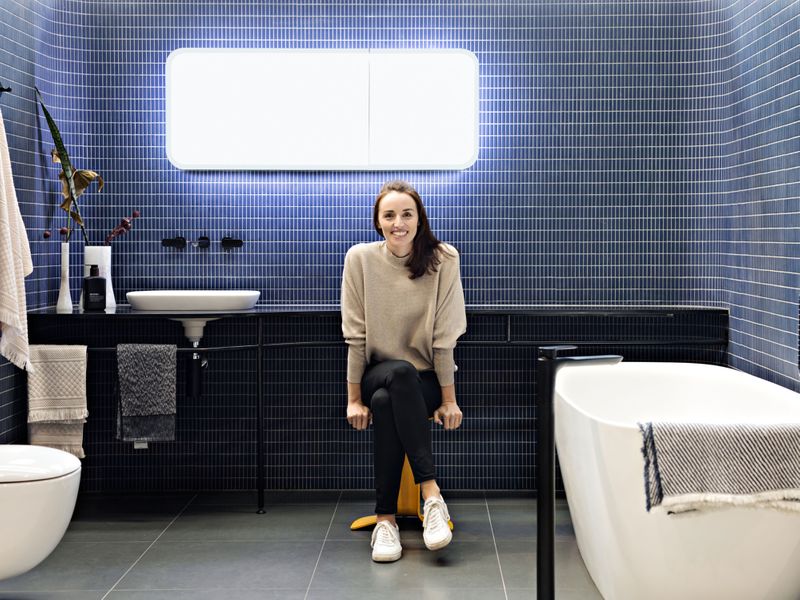
The waterproofing of the bathroom is an important step in the renovation work, as it is a room with a high concentration of moisture. Waterproofing works are necessary to ensure a more durable operation of finishing materials and supporting structures of the building. It will not allow to disperse seams or to provoke cracks.
In addition, the possibility of flooding of neighbors, through the same micro-cracks or other defects of floors and walls will be minimized. This can happen even if a small amount of water has been spilled on the floor. Waterproofing will help to avoid this kind of trouble. In addition, moisture entering cracks and water-insulated areas evaporates very slowly.
It also reduces the likelihood of fungus and mold that can occur in hard-to-reach areas due to excessive moisture accumulation there. Therefore, if you care about your health and the health of people close to you to carry out waterproofing is necessary. Modern materials and methods allow to carry out a full complex protection against moisture penetration into the walls and the basis of the bathroom floor.
WATERPROOFING METHODS
Before starting the waterproofing work, it is necessary to decide who will carry out all stages of the repair work. If you want to carry out these works on your own and do not involve specialists to save money and make repairs with a minimum budget, you should familiarize yourself with the main stages of waterproofing works. Knowledge of waterproofing materials and methods of their application or laying is also required.
Basic methods of protection of bathrooms from moisture penetration into the base of walls and floor:
- Paint method – this method of waterproofing is the most economical, as it uses bitumen mortar. This material is one of the most accessible on the modern market of building materials and is easy to use. It is enough to miss all sections of the bathroom walls well enough to get a good protection.
- The disadvantage of this protection is the short life, the service life – 5-7 years. This is quite a little considering that many people expect to make repairs for a longer period of time. But for those who like to change and change the interior of the bathroom every few years, such waterproofing is quite suitable and will save money.
- Lubricating method – this method is also easy to implement, but it is better that it is performed by a specialist. For waterproofing baths with this method is used bituminous mastic with additives of polymeric or rubber materials, which make the material more durable in operation and effective waterproofing.
- The adhesive method – in this case, a bituminous solution based on polymeric additives is used for gluing reinforced polyester or glass fabric to the bath walls. These materials are used on all surfaces of the ceiling walls and bathroom floor.
- Impregnated waterproofing, penetrating waterproofing – there are many options on the market. One of the effective ways is to impregnate concrete or plastered bathroom walls with a special composition, which can be easily purchased in a construction supermarket.

Waterproofing with roll-fed materials
Bathroom waterproofing can be carried out with your own hands without much effort, as there is nothing difficult to do with repairs. It is necessary to study carefully all main stages of work and to start them safely. One way is to glue the surface of the bathroom walls with roll-fed waterproofing materials. Very popular is the self-adhesive waterproofing, which is easy to install and requires almost no special skills, so it is ideal for independent work.
Self-adhesive waterproofing is very easy to install – it cuts off a piece of coil material of the required size and is placed on the wall around the entire perimeter of the bathroom surface or where you carry out protection against moisture penetration.
Waterproofing with coatings
Lubricants are best suited to carry out moisture protection work on their own. The modern construction market offers a mass of ready-made mixtures that can be applied immediately to the surface of the base walls and floor. That is, the advantage of this type of waterproofing in its versatility. Lubricants will significantly reduce the time required for repair work in contrast to roll-fed materials. Repair will be faster and the size of the budget will be lower.
There are two types of coatings – bitumen or cement-based
- Bituminous mastics have been used for a long time and have good indicators of protection against moisture. Modern bitumen mixtures for waterproofing are divided into two types: bitumen-rubber (rubber) and bitumen-polymer. Both types have excellent adhesion values, i.e. good adhesion to the surface.
- Cement coating material is produced from cement itself with the addition of fillers on a mineral basis. Waterproofing cement materials can be divided into two types – they are single-component and two-component. The former have a loose consistency and are diluted with water, while the latter are ready to work.
Before applying cement materials, the surface of the wall is pre-moistened. Further to be put the first layer, and then pair more layers (it is necessary to put 2-3 layers). Between the application of layers a break is made to make the coating well absorbed into the surface. Cement coatings have the ability to penetrate deep into the surface structure, which has a good effect on the efficiency of waterproofing.
STAGES OF WATERPROOFING OF WALLS
- Before waterproofing the bathroom, the surface of the walls should be carefully prepared for repair work. The floor and walls should be treated with a mortar consisting of cement-sand mixture. All cracks, hollows and surface irregularities should be repaired. It is necessary to execute a smooth and qualitative coupler, to plaster walls to the maximum well and qualitatively.
- Next comes the application of waterproofing composition on the surface of the walls. Carefully study the instructions of the composition you chose to work with. Apply the mixture evenly to the surface with a brush.
- Once the waterproofing material has been applied to the wall surface, wait at least 24 hours for the materials to settle and harden. Then proceed to finish the room with ceramic tiles or other materials, such as plastic. When tiling, you can use a special waterproofing adhesive that will increase the effectiveness of the waterproofing.
WATERPROOFING OF THE FLOOR
This stage of the works is very important for waterproofing of the bathroom, as the floor accumulates all the moisture that can go into the floor or floor. If you live in a panel house, the lack of waterproofing in the bathroom can lead to flooding of neighbors. As a consequence, there are significant financial costs if the pipe ruptures or leaks.
Treat the waterproofing of the floor with the utmost care, as it will avoid unpleasant consequences in case of leaks or burst pipes. Why risk and pay the injured party in case of flooding. The main mass of moisture goes to the floor, so multi-layered and qualitatively made waterproofing of the floor will protect from the penetration of moisture.





